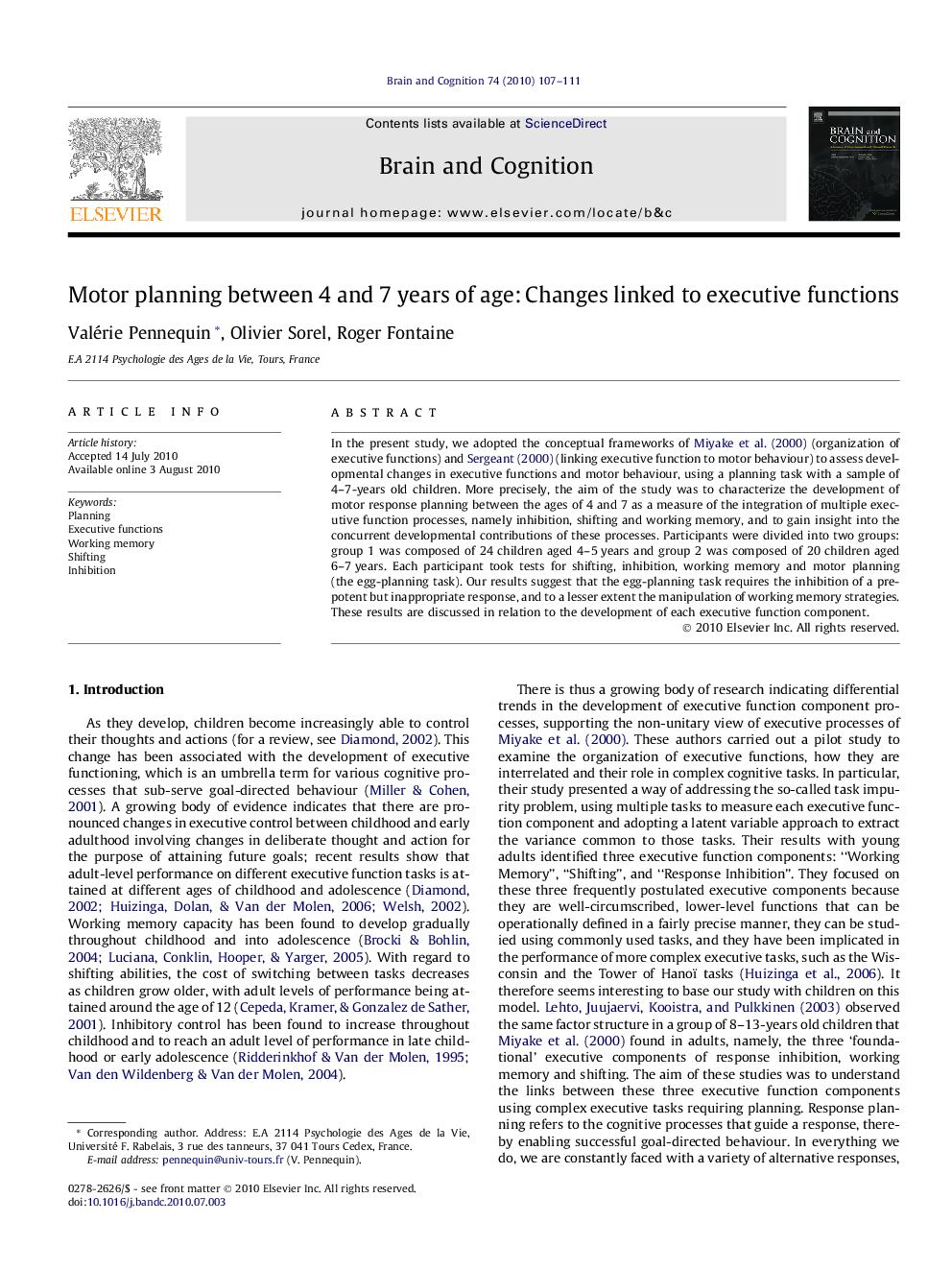| Article ID | Journal | Published Year | Pages | File Type |
|---|---|---|---|---|
| 924847 | Brain and Cognition | 2010 | 5 Pages |
In the present study, we adopted the conceptual frameworks of Miyake et al. (2000) (organization of executive functions) and Sergeant (2000) (linking executive function to motor behaviour) to assess developmental changes in executive functions and motor behaviour, using a planning task with a sample of 4–7-years old children. More precisely, the aim of the study was to characterize the development of motor response planning between the ages of 4 and 7 as a measure of the integration of multiple executive function processes, namely inhibition, shifting and working memory, and to gain insight into the concurrent developmental contributions of these processes. Participants were divided into two groups: group 1 was composed of 24 children aged 4–5 years and group 2 was composed of 20 children aged 6–7 years. Each participant took tests for shifting, inhibition, working memory and motor planning (the egg-planning task). Our results suggest that the egg-planning task requires the inhibition of a pre-potent but inappropriate response, and to a lesser extent the manipulation of working memory strategies. These results are discussed in relation to the development of each executive function component.
